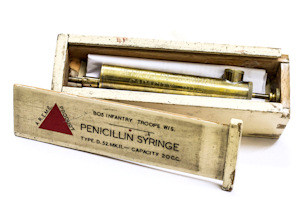Medical Museum in rare display
22 Oct 2014
A rare opportunity to view some of the historic medical curiosities that have been collected by the university over the past 150 years opens at the Manchester Central Library tonight.

Nine cabinets placed in the corridor outside the reading room on the first floor cover a range of topics from hearing and visual aids to equipment made of glass, silver and ceramics and a special display of packaging.
The items on display are rarely seen by the public. They come from the university’s Museum of Medicine and Health which is normally housed in the Stopford Building.
Running as part of the exhibition are images taken with a Victorian camera of hearing loss patients, and narratives of their hearing loss experiences. The work is part of a project, “Silence of The Photograph”, that explores what hearing loss means through the use of imagery. Images and narratives from this project can be viewed on the first floor and in the Shakespeare Hall Foyer.
The exhibition’s curator Dr Jenna Ashton says: “This is a fantastic opportunity for people to see some really fascinating medical equipment. We’re also really pleased to have the images on display from our project.”
She continues: “It’s been an interesting experience putting the collection together for display in the newly refurbished library with its circular space.”
Some of the highlights include:
• Second World War Penicillin syringe - This unusual syringe was designed to deliver a measured dose and was made of metal to stop it breaking on the battlefield. The syringe in the collection was made from the oil can of a Bren gun and is very rare.
• A delftware ceramic jar used for storing drugs dating from the 1700s. This is the oldest piece in the collection and is not normally displayed.
• Hearing aids spanning several decades including bejewelled ones made to look like hair clips.
• Eye models that illustrate the development of the eye.
• Illustrations by the renowned medical artist Dorothy Davison. She illustrated operations and pathological specimens for surgeons in Manchester from 1918 to 1957. The illustrations on display are mainly from the 1930s and 40s.
Artefacts and Experiences, Reframing Narratives Across Medicine and Health runs from October 22 to November 7 and is part of the Manchester Science Festival.
